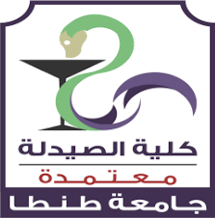
|
The Phosphodiesterase Inhibitor Pentoxifylline as a Novel Adjunct to Antidepressants in Major Depressive Disorder Patients: A Proof-of-Concept, Randomized, Double-Blind, Placebo-Controlled Trial.
|
|
|
Sahar Mohammed El-Haggar a, Mai Abdel-Raouf Eissa b, Tarek Mohammed Mostafa,a, Khaled Sabry El-Attar c, Mahmoud Samy Abdallah d
|
|
|
a Department of Clinical Pharmacy, Faculty of Pharmacy, Tanta University, Tanta, 31527, Egypt. b Department of Neuropsychiatry, Faculty of Medicine, Tanta University, Tanta, 31527, Egypt. c Military Psychiatry Hospital, Cairo, 11773, Egypt. d Department of Clinical Pharmacy, Faculty of Pharmacy, University of Sadat City, Sadat City, Menoufia, 32897, Egypt.
|
|
|
sahar2612@yahoo.com
|
|
|
9
|
|
|
Background: There is evidence for an association between major depressive disorder (MDD) and both inflammatory and phosphodiesterase (PDE) pathways. Study aimed to evaluate the adjunct role of the PDE inhibitor pentoxifylline (PTX), a compound with anti-inflammatory properties, in treatment of adult patients with MDD. Methods: This was a prospective, 12-week, double-blind study of parallel groups. Eighty adult outpatients who met the DSM-IV criteria for MDD participated in the trial. Patients were required to have a baseline Hamilton Rating Scale for Depression (HAM-D) score of at least 18. Patients were allocated randomly: 40 received escitalopram 20 mg/day plus placebo while other 40 received escitalopram 20 mg/day plus PTX (400 mg b.i.d.). Patients were assessed by a psychiatrist at baseline, and 4, 8, and 12 weeks after medication had been started. Serum levels of TNF-α, IL-6, IL-10, BDNF, 8-OHdG, and serotonin were measured at baseline and after therapy. Results: After 8 and 12 weeks, the PTX group showed a statistically significantly greater improvement in HAM-D score compared to the control group (least squares mean difference [LSMD] –3.29, p = 0.000 and LSMD –3.49, p = 0.000, respectively). Moreover, the PTX group showed a statistically significantly greater reduction in the serum levels of TNF-α, IL-6, IL-10, and 8-OHdG along with a statistically significant increase in the levels of BDNF and serotonin in comparison with the control group after the treatment. Conclusion: The findings of this study suggest that PTX could be a promising adjunct to antidepressants in treatment of MDD patients.
|
|

|
Toxicological effects of Aflatoxin on liver and kidney of rats
|
|
|
Hanaa Atef Saad El-din Naseem (Lecture of chemistry and toxicology of pesticides). Plant Protection Department - Faculty of Agriculture - Tanta University - Egypt (Nassemhana79@gmail.com
|
|
|
faculty of africulture - Tanta university
|
|
|
Nassemhana79@gmail.com
|
|
|
25
|
|
|
Toxicological effects of Aflatoxin on liver and kidney of rats.
Hanaa Atef Saad El-din Naseem
(Lecture of chemistry and toxicology of pesticides).
Plant Protection Department - Faculty of Agriculture - Tanta University - Egypt
(Nassemhana79@gmail.com)
ABSTRACT
Toxicity tests were observed by studying the in vivo effects of Aflatoxin on experimental animals. This study mainly focused on the liver and kidney of rats. Adult male of rats were given Aflatoxin injected through intraperitoneal (IP injection) by different concentrations 20 ppm, 40 ppm, 60 ppm, 80 ppm and 100 ppm for one week. The animals were sacrificed for biochemical and histopathological studies on liver and kidney. Organs were homogenates for measuring: Lipid Peroxidation , Lactate Dehydrogenase , Superoxide Dismutase , Catalase, Glutathione Peroxidase , Glutathione Reductase , Glutathione Stransferase , Alkaline Phosphatase , Glucose 6-Phosphatase , Fructose 1, 6-bisphosphate , Vitamin C , Vitamin E , Sodium , Potassium and Uric Acid. The results showed that an increasing in lipid peroxidation and alkaline phosphatase, and decreasing in antioxidants which had led to reducing productive capability and weak immune system function. So Aflatoxin causes a Hepatocellular carcinoma (HCC) which is the most common type of primary liver cancer in adults, and is the most common cause of death in a human.
Key words: Toxicity, Aflatoxin, liver, kidney.
|
|

|
Detection of Mycoplasma hominis and Ureaplasma urealyticum in Urine of Pregnant Women and Their Antibiotic Susceptibility Pattern
|
|
|
Nagwan ME Elkolaly1, Marwa ME Abd-Elmonsef1, Mostafa ZE Mohamed2 and Ahmed M Amin1
|
|
|
Departments of Microbiology & Immunology1, Obstetric and Gynecology2, Faculty of Medicine, Tanta University, Egypt
|
|
|
dr.mero80@yahoo.com
|
|
|
38
|
|
|
Background: Urinary tract infection (UTI) is one of the most frequent infections of pregnancy. Untreated UTI in pregnancy either asymptomatic or symptomatic carries a high risk of morbidity and mortality to the pregnant women and their fetuses. The question of whether to prescribe antibiotics to pregnant women is a great dilemma. Certain antibiotics are unsuitable for use due to their potential toxicity, others are teratogenic and should be avoided entirely during pregnancy. A potentially more serious situation is the wide spread of drug resistance among bacteria causing UTI with limited treatment options. The problem is further complicated when the causative organisms of UTI are Mycoplasma hominis and Ureaplasma urealyticum.
M. hominis and U. urealyticum are important pathogens implicated in urogenital infections and complicated pregnancy. This two organisms are difficult to be diagnosed by routine culture methods and difficult to be treated by safe antibiotics used commonly in pregnancy.
Aim: Detection of M. hominis and U. urealyticum in cases of UTI in pregnant women by commercial Mycoplasma System Plus (MSP), determine their antibiotic susceptibility patterns and confirm the commercial culture results by PCR assay.
Methods: One hundred pregnant women were included, 50 symptomatic patients and 50 controls. Urine samples were taken from all subjects and analyzed using the MSP kit which detect the two organisms and their antimicrobial susceptibility. The specimens were further subjected to multiplex PCR for the molecular detection of genital mycoplasmas.
Results: MSP could be considered a cost-effective alternative to the complex conventional culture methods for the rapid detection of genital mycoplasmas. There was a fair agreement between the MSP and the multiplex PCR. Doxycycline and tetracycline would be the first choice drugs when empirical therapy is required.
|
|

|
Greening liquid chromatographic methods by using dynamically modified stationary phases
|
|
|
Mokhtar Mabrouk, Israa I. Abdelfattah, Fotouh R. Mansour*
|
|
|
Faculty of Pharmacy, Tanta University
|
|
|
fotouhrashed@pharm.tanta.edu.eg
|
|
|
79
|
|
|
High-performance liquid chromatography (HPLC) is the most widely used analytical technique in pharmaceutical analysis. Most HPLC methods are based on the reversed-phase (RP) mode using organic solvents as mobile phase modifiers. Due to the health and environmental issues of organic solvents commonly used in RP-HPLC, greening RP-HPLC methods has received great attention in the last few years. Green chromatography aims to replace toxic non-ecofriendly solvents with safer environmentally benign alternatives. This study shows that the utility of a C18 column dynamically modified with cetyltrimethylammonium bromide (CTAB) for separation of ribavirin using methionine as an internal standard. The stationary phase was Thermo Scientific Hypersil ODS C18 HPLC Column (250 mm × 4.6mm ID, 5μm particle size). The mobile phase consisted of water (pH adjusted with phosphoric acid to 3.5) at a flow rate of 0.6mL/min and UV detection at 210 nm. The dynamic modification was induced by coating the column with 10 mM CTAB for 30 minutes at a flow rate of 0.3mL/min and a column temperature of 25°C. The different factors that may affect the peak retention were studied including the pH, the type of acid and the ionic strength of the mobile phase. Compared with the non-coated column, the dynamically modified column could separate the two peaks in a shorter time with higher separation efficiency and better peak symmetry.
|
|

|
Effects of adding vildagliptin to metformin on major cardiovascular risk parameters in Egyptian diabetic patients
|
|
|
Bassant M. Mahboub1, Sahar M. El-Haggar2, Yasser M. Abdelraouf3, and Gamal A. El-Azab2
|
|
|
Drug and Poison Information Center, Faculty of Pharmacy, Tanta University, Tanta, Egypt. 2 Clinical Pharmacy Department, Faculty of Pharmacy, Tanta University, Tanta, Egypt. 3 Internal Medicine Department, Faculty of Medicine, Tanta University, Tanta, Egypt.
|
|
|
sahar2612@yahoo.com
|
|
|
87
|
|
|
Objective Cardiovascular (CV) complications are the most devastating consequences of diabetes and attribute to its higher costs. Preclinical studies demonstrated the possible anti-inflammatory and anti-atherothrombotic properties of incretin-based therapies yet, clinical data are lack particularly regarding vildagliptin. This study aimed at evaluating the effect of adding vildagliptin to metformin on major CV risk parameters in newly diagnosed patients with type 2 diabetes mellitus (T2DM).
Methods After a four-week titration period of metformin, 43 eligible patients were prospectively randomized to receive combined vildagliptin/metformin therapy (50 mg/1000 mg bid) or metformin alone (1000 mg bid). Anthropometric measurements, blood pressure (BP), glycated hemoglobin (HbA1c), lipid profile, high sensitivity C-reactive protein (hs-CRP), total antioxidant capacity (TAC), and plasminogen activator inhibitor-1 (PAI-1) were assessed at baseline (after the titration period) and after 12 weeks.
Results Forty patients completed the study (20 in each group). At baseline, no significant differences were observed between groups in all studied parameters. After 12 weeks, combined vildagliptin/metformin showed significant reductions in HbA1c (mean difference: -2.68 ± 2.24 versus -1.37 ± 1.8%, P= 0.043, respectively), systolic BP (mean difference: -12.5 ± 13.03 versus -3.75 ± 11.57 mmHg, p= 0.012, respectively), diastolic BP (mean difference: -10.25 ± 9.39 versus -2.5 ± 9.39 mmHg, p= 0.009, respectively), triglycerides (mean difference: -9.7 ± 18.48 versus 10.35 ± 27.36 mg/dl, p= 0.037, respectively), and PAI-1(mean difference: -7.93 ± 17.11 versus 3.9 ± 19.39 ng/ml, p= 0.048, respectively) as compared to metformin monotherapy. No significant differences were observed between both groups regarding their effects on other studied parameters.
Conclusion Adding vildagliptin to metformin resulted in a decrease in systolic and diastolic BP, triglycerides, PAI-1, and HbA1c with non-significant improvements in hs-CRP, TAC, and other lipid markers. These findings coupled with the proven good safety profile of vildagliptin could predict a significant clinical benefit.
|
|

|
Prevalence of Carbapenemases Among Imipenem Resistant Acinetobacter baumannii Isolates in Tanta, Egypt
|
|
|
Fatma I. Sonbol1, Tarek E. Elbanna1, Noha A. Attia1
|
|
|
faculty of pharmacy, Tanta University
|
|
|
noha.atiya@pharm.tanta.edu.eg
|
|
|
105
|
|
|
The capability of carbapenemase production is one of the chief mechanisms for the development of multidrug-resistance (MDR) and extensively drug-resistance (XDR) in Acinetobacter baumannii. This study aimed to detect the prevalence of different types of carbapenemases produced by carbapenem-resistant A. baumannii in Tanta region. Out of 1223 clinical samples, collected from Tanta University teaching hospitals, a total of 69 (5.6%) A. baumannii isolates were recovered as identified by standard biochemical tests as well as polymerase chain reaction (PCR) technique that detect the intrinsic blaOXA-51-like gene. Susceptibility to various antimicrobials was performed by disc diffusion method and revealed multiple (1-15) drug resistance of all isolates. Nevertheless, colistin was effective against all tested isolates. A total of 31 out of 69 (44.9%) isolates were imipenem resistant. These isolates, which included 6 (19.4%) MDR and 25 (80.6%) XDR, were selected for further study. Detection of carbapenemases production by both phenotypic and genotypic techniques were performed and all the imipenem resistant A. baumannii isolates (IMRAb) were found carbapenemases producers. These carbapenemases included metallo-β-lactamases, blaOXA-23-type and blaOXA-58-type carbapenemases detected in 100% (31/31), 71% (22/31) and 13% (4/31) of these isolates, respectively. Our findings highly recommend careful monitoring for the presence of carbapenem-resistant MDR or XDR A. baumannii among hospitalized patients especially because some of the detected resistance genes are known to be located on a plasmid which could facilitate resistance dissemination.
|
|

|
Effect of Fenofibrate Adjuvant Therapy on Endothelial Dysfunction in Egyptian Patients with Type 2 Diabetes Mellitus
|
|
|
Sahar K. Hegazy a, Tamer A. Elbedewy b, Haidy M. Sami
|
|
|
Clinical Pharmacy Department, Faculty of Pharmacy, Tanta University, Egypt. b Internal Medicine Department, Faculty of Medicine, Tanta University, Egypt. c Department of Pharmacy Practice, Faculty of Pharmacy, Delta University for Science and Technology, Gamasa City, Egypt.
|
|
|
sahar2612@yahoo.com
|
|
|
202
|
|
|
Background and aim: Endothelial dysfunction plays a role in type 2 diabetes mellitus (T2DM) related vascular complications. This study aimed at evaluating the effect of Fenofibrate adjuvant therapy on endothelial dysfunction in patients with T2DM who never previously administered lipid lowering medications.
Methods: In this randomized, controlled, prospective study, a total number of 75 adult subjects of both sexes were recruited from Internal Medicine Department of Tanta University Hospital. The participants were classified into three groups: group 1 (control group) which involved 25 healthy subjects, group 2 which consisted of 25 T2DM patients who received oral Glimepiride/Metformin (2:500 mg/day) and Group 3 which included 25 T2DM patients who received oral Glimepiride/Metformin (2:500 mg/day) plus oral Fenofibrate adjuvant therapy (300 mg/day). Patients were assessed before and three months after intervention for determination of clinical parameters (BMI, blood pressure), glycemic picture (HbA1C, HOMA-IR), lipid panel, albumin to creatinine ratio (ACR) and endothelial dysfunction parameters (ADMA, Syndecan-1). Data were statistically analyzed by one way analysis of variance; p < 0.05 was considered statistically significant.
Results: Addition of Fenofibrate adjuvant therapy to oral hypoglycemic agents (group 3) provoked significant decrease in all measured parameters including ADMA, Syndecan-1, glycemic parameters, lipid panel, clinical parameters and ACR as compared to patients received oral hypoglycemic drugs alone (P<0.05). As compared to control group, group 3 showed no significant difference in most measured parameters after three months of therapy. For T2DM patients treated with oral hypoglycemic agents plus Fenofibrate, both ADMA, Syndecan-1 showed significant positive correlation with clinical parameters, glycemic picture, ACR and lipid panel except for HDL-C which exhibited significant negative correlation (P<0.05).
Conclusion: Addition of Fenofibrate adjuvant therapy to oral hypoglycemic drugs improved the vascular endothelial dysfunction, glycemic picture, lipid panel, ACR, blood pressure and reduces the body mass index in patients with T2DM.
|
|

|
EDTA as a double-edged sword agent: Toxicological, nutritional and anticancer applications
|
|
|
Sabry A. Elnaggar
|
|
|
Professor of Physiology. Zoology Department, Tanta University. Tanta 31527. Egypt
|
|
|
sabry_elnaggar@yahoo.com
|
|
|
218
|
|
|
EDTA as a double-edged sword agent: Toxicological, nutritional and anticancer applications
Abstract
Ethylenediamine tetraacetic acid (EDTA) is used in various medical, industrial, agricultural applications. Recently, it has been noticed that some Egyptian Chefs are using EDTA for accelerating Vicia faba beans ripping. We aimed to address the effect of EDTA addition on the nutritional value of V. faba beans and their possible toxicity after administration in cooking media for long time on the liver and kidney functions in mice. Furthermore, this study was extended to investigate the antitumor efficacy of high and low doses of EDTA alone or with cisplatin (Cis) at early and late time points of treatments using Ehrlich ascites carcinoma (EAC) bearing mice model. To address all these points, we have run several experiments in the experimental mice, Vicia faba beans. The results showed that EDTA addition to V. faba beans during the cooking process decreased the levels of proteins, amino acids, lipids, carbohydrates and some electrolytes, which significantly decreased the nutritional value of the cooked V. faba beans . The results showed that the LD50 of EDTA was 250 mg/Kg. The data showed that EDTA alone or cooking medium containing EDTA led to an obvious toxicity in the liver and kidney functions of mice. Treatment with EDTA did not show any antitumor activity and did not interfere with the antitumor efficacy of Cis. The results showed that EDTA co-treatment enhanced the antitumor efficacy of low dose of Cis at early and late time points. In addition, EDTA co-treatment potentially ameliorated the Cis-induced side effects on liver and kidney functions. In summary, EDTA reduces the nutritional values of beans, causes some toxic effects on the liver and kidney tissues and enhances the antitumor efficacy of the low dose of cisplatin.
|
|

|
E-prostanoid Receptor Antagonist Combined with Celecoxib Downregulated β1- integrin Expression in Mice Bearing Solid Ehrlich Carcinoma
|
|
|
Nahla EL-Ashmawy*, Enas EL-Zamarany**, Eman Gouda*, Naglaa F. Khedr*, Hend Selim*
|
|
|
Nahla EL-Ashmawy*, Enas EL-Zamarany**, Eman Gouda* *: Biochemistry Department, Faculty of Pharmacy, Tanta University, Egypt **: Clinical Pathology Department, Faculty of Medicine, Tanta University, Egypt
|
|
|
hendmselim@gmail.com
|
|
|
231
|
|
|
Back ground: Breast cancer is one of the most leading causes of death in women around the world. Cyclooxygenase -2 (COX2)-induced prostaglandin E2 (PGE2) was found to play an important role in breast cancer development. The present study aimed to uncover the interplay between PGE2 and β1-integrin expression, and to study the anticancer effect of E-prostanoid receptor 1 (EP1) antagonist, SC19220, alone or in combination with COX-2 inhibitor (celecoxib) in mice bearing Solid Ehrlich Carcinoma (SEC). Methods: SEC was induced in 40 female mice as a model for breast cancer. Mice were divided randomly into four equal groups (n=10): Tumor control, celecoxib (CXB), EP1 antagonist, and co-treatment. Celecoxib (10mg/kg) and SC19220 (2mg/kg) were given intraperitoneally every three days for 6 cycles, starting on 12th day of inoculation. Results: Both celecoxib and EP1 antagonist, alone or in combination, showed antitumoregenic effect by decreasing tumor weight, tumor volume, PGE2 level, EP1 and β1-integrin gene expression. The survival rate was improved in treated groups to reach 100%. The combined treatment with CXB and EP1 antagonist showed more significant decrease in tumor weight and volume compared with CXB or EP1 antagonist single treatment. Conclusion: EP1 antagonist (SC19220) proved an antitumerogenic effect alone or when combined with CXB and could play a promising new treatment strategy against breast cancer.
|
|

|
Silymarin Triggers Caspase-Dependent Apoptosis and cell cycle arrest in Testosterone Induced Benign Prostatic Hyperplasia in Rats
|
|
|
Nahla E. El-Ashmawy, Eman G. Khedr, Hoda A. El-Bahrawy, Nada N. Helmy
|
|
|
Department of Biochemistry, Faculty of Pharmacy, Tanta University, Egypt
|
|
|
nada.helmi@pharm.tanta.edu.eg
|
|
|
236
|
|
|
Background: Benign prostatic hyperplasia (BPH) is considered a normal part of the ageing process in men and is characterized by an imbalance between cell proliferation and apoptosis. Our study aimed to investigate the potential protective role of silymarin (SIL) against testosterone-induced BPH in rats and to elucidate the molecular mechanisms underlying SIL pro-apoptotic and anti-proliferative effects using Z-VAD-FMK (pan-caspase inhibitor).
Methods: Forty adult male Wistar rats were divided equally into four groups: control group, BPH group (3 mg/kg testosterone propionate, s.c. for 14 days, SIL group (50 mg/kg SIL, orally, once daily with 3 mg/kg testosterone propionate s.c.) and inhibitor group (50 mg/kg SIL orally with 3 mg/kg testosterone, s.c. and 0.5 mg/rat Z-VAD-FMK, i.p.).
Results: SIL significantly reduced prostatic Bcl-2. Conversely, SIL increased Bax, p27 (Cyclin-dependent kinase inhibitor) concentration and caspase -3 activity compared to BPH group. The histological features of BPH such as hypertrophy, papillary projections formation, improved in SIL group.
Conclusion: SIL showed a significant anti-proliferative and pro-apoptotic role in BPH and accordingly it could be effectively and safely used as a treatment tool in cases of BPH or prostatic disorders.
|
|

|
Potential drug-drug interactions of cardiovascular diseases in Egyptian outpatients: incidence, Types, managements, preventions.
|
|
|
Omar AbdelFattah AbdelMagged
|
|
|
BSc of pharmacy , Faculty of pharmacy , Kafrelsheikh University , Egypt
|
|
|
omarabdelfattah2020@gmail.com
|
|
|
259
|
|
|
Abstract:
Cardiovascular diseases are chronic diseases that usually involve multiple drugs co-administration giving the potential for many drug drug interactions. Limited data is available regarding drug interactions of cardiovascular diseases in Egypt. This work studied potential drug-drug interactions of cardiovascular diseases in Egyptian patients with consideration to incidence, types, management and prevention. Methods: A cross-sectional retrospective study was performed on outpatients with cardiovascular disorders in delta region of Egypt. About 5,100 prescriptions were analyzed for drug-drug interactions. Lexi-comp program was used as the screening tool. Results: The frequency of potential drug-drug interactions was 11 %. Major therapeutic classes of drug interactions with cardiovascular drug were analgesics, antidepressants, cardiovascular and antithrombotic agents. The risk for category X drug interaction requiring avoiding combinations was 39% and the risk for category D drug interaction requiring modifying drug was 42%. The main mechanisms for drug interaction were metabolism and pharmacodynamics interaction and the major reported toxicity was bleeding, orthostatic hypotension and sedation. Risk people include diabetic and patients with rheumatic disorders Conclusions: The incidence of potential cardiovascular drug interaction in Egypt is high. Drug monitoring, minimizing risk factors and increasing awareness of potential drug interaction in cardiovascular diseases are mandatory in Egypt.
Key words: Cardiovascular, interaction, metabolism, incidence, Egypt
|
|

|
The potential use of Musa sp. leaves extract for heavy metals detoxification
|
|
|
Karim Samy El-Said 1, *, Heba A. Mahmoud 2, Hala El-Tantawy 3, Doaa Ibrahim Kabil 4, Mahrous A Ibrahim5,6, Abdelhalim Alkhazendar7, Sabry Ali El-Naggar 7
|
|
|
1 Biochemistry Division, Chemistry Department, Faculty of Science, Tanta University, Egypt 2 Pharmacology Department, Faculty of Medicine, Tanta University, Egypt 3 Zoology Department, Faculty of Science, Ain Shams University, Cairo, Egypt 4 Nutrition and Food Science, Faculty of Specific Education, Tanta University Egypt 5 Forensic Medicine and Clinical Toxicology, College of Medicine, Jouf University, Aljouf, P.O box. Postal Code: 42421, Saudi Arabia 6Forensic Medicine and Clinical Toxicology Department, Faculty of Medicine, Suez Canal University (SCU), Ismailia, Postal Code: 41522, Egypt 7Zoology Department, Faculty of Science, Tanta University, Egypt
|
|
|
kareem.ali@science.tanta.edu.eg
|
|
|
280
|
|
|
Heavy metals intoxication causes several health problems that necessitating finding new protective and therapeutic approaches. Recently, some medicinal herbs were reported as natural chelating agents. Therefore, this study aimed to evaluate the effect of Musa sp. leaves extract (MLE) as a natural chelating agent by using cadmium (Cd)-intoxicated mice. Phytochemical screening, iron binding capacity (IBC), the median lethal dose (LD50) and the chelating activity of MLE were assessed. Fifty mice were intraperitoneally (i.p) injected with MLE (1000 to 5000 mg/kg) for MLE LD50 determination. Other 50 mice were used for evaluating the chelating activity. Blood samples were collected for hematological, liver and kidney functions assessments. Liver tissues homogenates were used for determination of oxidant/antioxidant parameters. Liver and kidney sections were fixed for histopathological investigations. MLE showed potent free radicals scavenging activity (DPPH) and IC50. The IBC for MLE was 75 µg/ml. The LD50 of MLE was 3000 mg/kg. MLE showed a promising chelating activity in Cd-intoxicated mice by ameliorating Cd toxicity in liver and kidney tissues, evidenced by improving the hematological, biochemical and histopathological alterations.
Keywords: Musa sp., Phytochemicals, Chelating agent, Antioxidants, Cadmium, Toxicity
|
|

|
Inhibitory and apoptotic effects of metformin and d-limonene in HepG2 cancer cells
|
|
|
Elsayed I. Salim1, Mohamed S. Fathy1, Doha M. Beltagy2, Mona M. Alabasy1
|
|
|
1Department of Zoology, Faculty of Science, Tanta University, Tanta, 31527, Egypt. 2Biochemistry Division, Department of Chemistry, Faculty of Science, Damanhour University, Egypt.
|
|
|
monaalabasy@ymail.com
|
|
|
1372
|
|
|
Hepatocellular carcinoma (HCC) represents approximately 85% of all primary liver cancer. Number of factors has been identified that increase the risk of (HCC). The biguanide metformin is a first-line therapy for the treatment of type II diabetes in which it exerts its effects primarily on the liver. D-limonene is one of the most common terpenes in nature. It is a major constituent in several citrus oils. The aim of the current research is to evaluate the utility of anti-tumor effects of metformin and d-limonene on HepG2 cell line and normal cells; separately and in combination. Results: The integrated systems pharmacology genetic pathway approach applied here illustrated the molecular correlations between metformin and d-limonene, showed one gene associated between both drugs. We applied system-based analysis to introduce a drug-target-pathway network that clarifies different mechanisms of treatment. Also, the data show inhibitory effects on cell survival by all treatments particularly the combination therapy. The drug treated groups also showed obvious DNA fragmentation levels and a high level of apoptosis indicated flow cytometery as compared to non-treated control. Conclusion: We found out that metformin, d-limonene and their combinations have an obvious apoptotic effect on HepG2 cell line which could be useful to liver cancer patients.
|
|

|
IL28B (rs8099917) gene polymorphism should be considered as predictor for non-response to treatment of HCV (genotype 4) infection by interferon and ribavirin in Egypt
|
|
|
Mohammed A. Eid1*, Omiama A. Awadallah1, Niveen S. Saudy2, Azza E. A. Youssef1
|
|
|
Department of Botany (Microbiology), Faculty of Science, Tanta University, Tanta, Egypt1. Faculty of Medicine, Mansoura University, El-Mansoura, Egypt 2
|
|
|
mohamed.eid@science.tanta.edu.eg
|
|
|
1397
|
|
|
Infection by hepatitis C virus is a big threat against human health all over the world. Egypt represented highest prevalence of HCV infection (predominantly genotype 4) comparing to other countries in the world. Many host factors could affect the treatment response in HCV infection. One of these factors is IL28B gene polymorphism. We tried to evaluate its role among treated patients of chronic HCV infection. One hundred patients were selected and submitted to combined therapy of interferon and ribavirin. The blood samples were collected from responders, relapsers and non-responders. Genomic DNAs were extracted from whole blood samples, and genotyping of IL28B gene polymorphism was carried out by real time polymerase chain reaction (RT-PCR). Our data suggested that TT genotype of IL28B (rs8099917) was associated with higher rates of sustained virological response (SVR) and G allele was associated with higher risk to develop relapsers and non-responses. According to our analysis, we highly recommend considering IL28B (rs8099917) gene polymorphism as predictors for non-response to treatment of HCV infection by interferon and ribavirin.
|
|
|